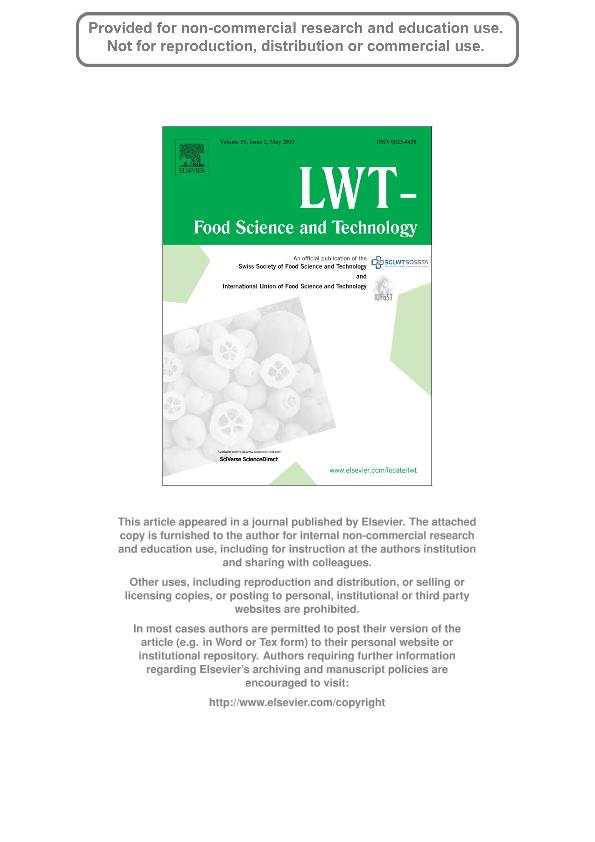Artículo
Comparing methods for extracting amaranthus starch and the properties of the isolated starches
Fecha de publicación:
11/2012
Editorial:
Elsevier
Revista:
LWT - Food Science and Technology
ISSN:
0023-6438
Idioma:
Inglés
Tipo de recurso:
Artículo publicado
Clasificación temática:
Resumen
Starch was isolated from Amaranthus cruentus whole grain (WG) and whole grain flour (WGF) using both the alkaline method (AM) and AM combined with food degree protease digestion (AMP). The methods involved successive soaking in NaOH solution (0.25 g/100 ml in AM and 0.05 g/100 ml in AMP), fibrous fraction wet milling, enzymatic hydrolysis in AMP and multi-staged centrifugation. Milling the amaranth grains in both methods increased significantly starch yield, recovery, and purity when compared against WG and lowered soaking times as well. Starch yield and recovery were 116.7% and 123.6% higher in WGF while protein, fiber, and ash contents showed decreases of about 44.4%, 34.8%, and 30.4% respectively. The effect of the extracting methods was less notorious than that of the grain milling. The results suggest that both methods are suitable for extracting starch from previously milled grains despite the fact that the AM shows significant operative advantages. The starches extracted showed conservative structure, A-type difractrometric patterns with high crystallinity degrees (∼39%) and Tg (gelatinization temperature) values (∼74 °C). These properties not present significant differences as a consequence of the extracting procedure used.
Palabras clave:
Amaranth Starch
,
Isolation
,
Crystallinity
,
Microestructure
Archivos asociados
Licencia
Identificadores
Colecciones
Articulos(ICYTAC)
Articulos de INST. DE CIENCIA Y TECNOLOGIA DE ALIMENTOS CORDOBA
Articulos de INST. DE CIENCIA Y TECNOLOGIA DE ALIMENTOS CORDOBA
Citación
Villarreal, Myriam Elizabeth; Ribotta, Pablo Daniel; Iturriaga, Laura Beatriz; Comparing methods for extracting amaranthus starch and the properties of the isolated starches; Elsevier; LWT - Food Science and Technology; 51; 2; 11-2012; 441-447
Compartir
Altmétricas




